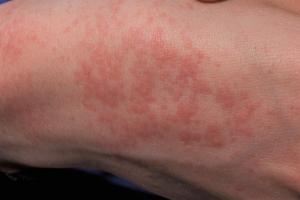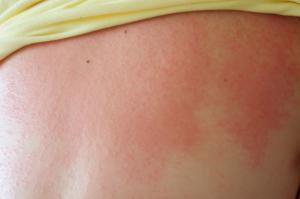Heat rash (prickly heat)
Heat rash (prickly heat) is uncomfortable but usually harmless. It should clear up on its own after a few days. See your GP if the rash doesn’t improve after a few days or your baby has a rash and you’re worried.
How to check if you have heat rash
The symptoms of heat rash include:
- small red spots
- an itchy, prickly feeling
- redness and mild swelling


The symptoms are often the same in adults and children.
It can appear anywhere on the body and spread, but it's not infectious to other people.
How you can treat or prevent heat rash
One of the main things to do to treat or prevent heat rash is to keep your skin cool. This is so you don't sweat and irritate the rash.
Things you can do to keep your skin cool include:
- wearing loose cotton clothing
- using lightweight bedding
- taking cool baths or showers
- drinking plenty of fluid to avoid dehydration
Things you can do to calm the itching or prickly rash include:
- applying something cold, such as a damp cloth or ice pack (wrapped in a tea towel) for no more than 20 minutes
- tapping or patting the rash instead of scratching it
- not using perfumed shower gels or creams
Getting advice from a pharmacist
You can get advice from a pharmacist about heat rash. They can suggest the best treatment to use depending on your circumstances, for example, if you're pregnant or a child has the rash.
They might recommend:
- calamine lotion
- antihistamine tablets – (these aren't always appropriate – your pharmacist will be able to advise you)
When to see your GP
You should see your GP if:
- the rash doesn't improve after a few days
- your baby has a rash and you're worried
Causes of heat rash
Heat rash is usually caused by excessive sweating.
Sweat glands get blocked and the trapped sweat leads to a rash developing a few days later.
Babies often get it because they can't control their temperature as well as adults and children can.
More useful links
The information on this page has been adapted from original content from the NHS website.
For further information see terms and conditions.